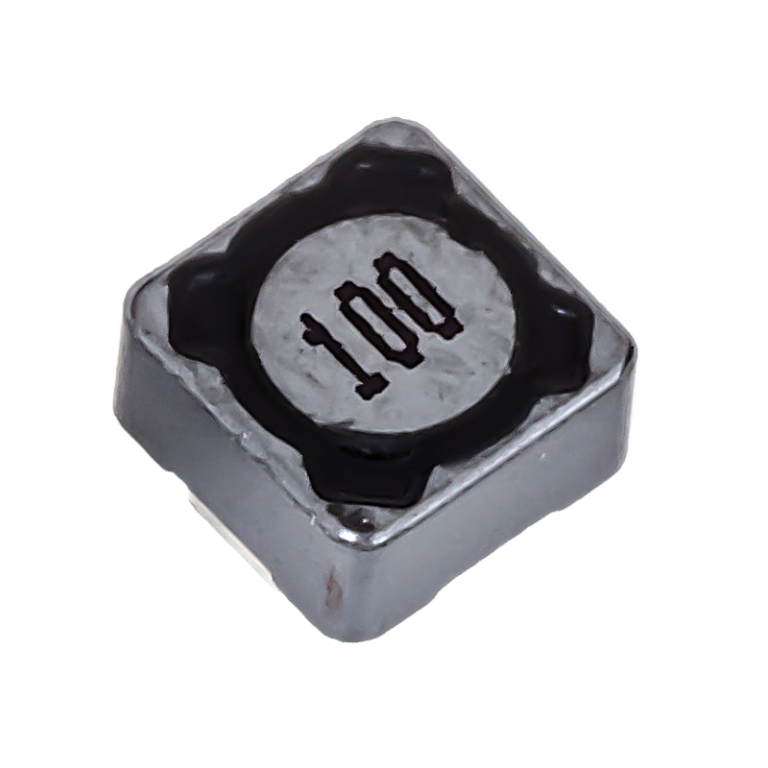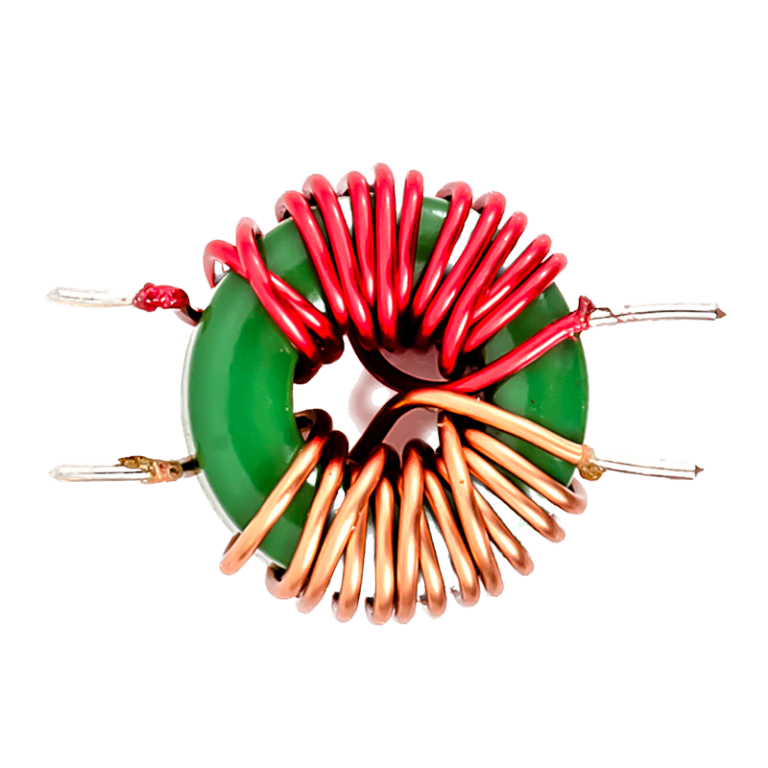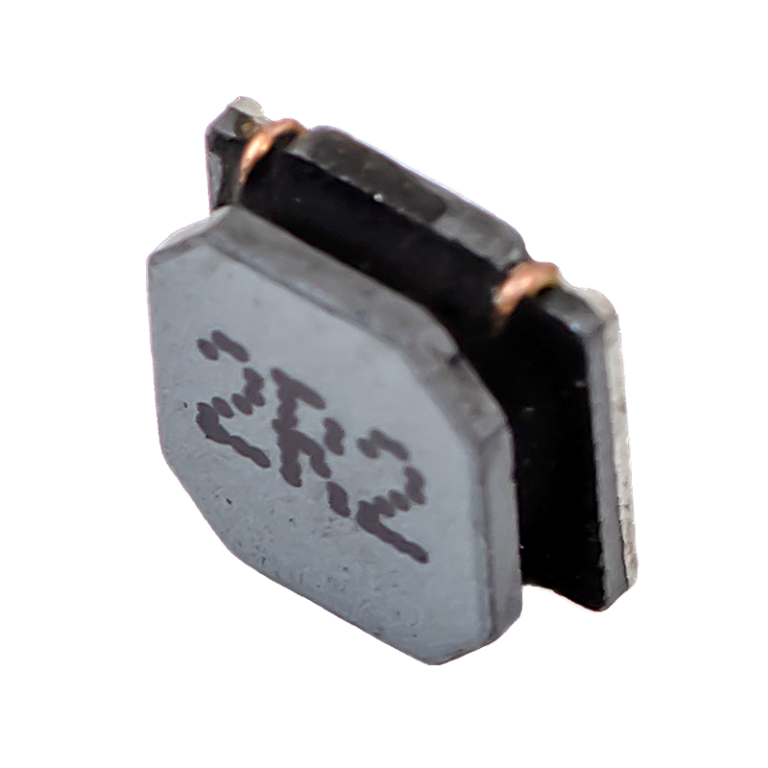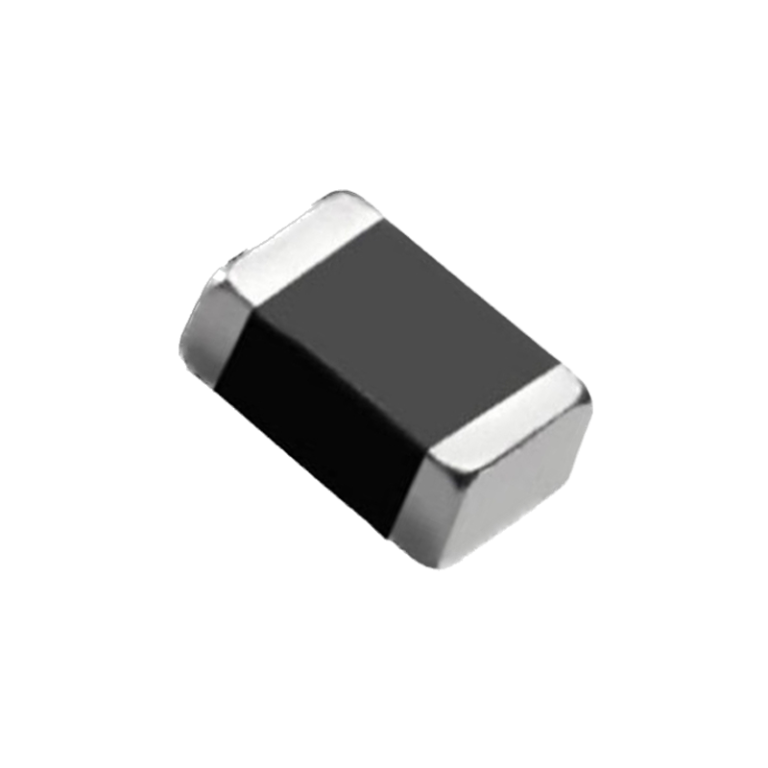This is Semi Shielded Inductors using epoxy.
What kind of inductors use epoxy and why?
Epoxy is commonly used in the manufacturing process of molded power inductors, which are a type of surface mount inductor. Molded power inductors are designed to handle higher currents and power levels than standard chip inductors. The epoxy is used for encapsulating the internal components of the inductor, providing several benefits:
- Environmental Protection: Epoxy encapsulation protects the sensitive internal components of the inductor, such as the core and windings, from environmental factors like moisture, dust, and contaminants. This improves the inductor's reliability and lifespan, making it suitable for rugged and harsh operating conditions.
- Mechanical Stability: The epoxy encapsulation adds mechanical stability to the inductor, making it more resistant to physical damage due to vibrations, shocks, or handling during the assembly process.
- Thermal Performance: Epoxy has good thermal conductivity, which allows for efficient heat dissipation from the internal components to the outer surface of the inductor. This helps to handle higher power levels without overheating and ensures stable performance at elevated temperatures.
- Reduced Electromagnetic Interference (EMI): The epoxy encapsulation acts as a shield, reducing the electromagnetic interference emitted by the inductor and also improving its immunity to external electromagnetic interference.
- Customization: The epoxy molding process allows for custom shapes and sizes of the inductor, enabling the design of compact inductors that can fit specific space constraints on the PCB.
- Cost-Effectiveness: Despite the additional manufacturing process, epoxy-encapsulated inductors can be cost-effective in high-volume production. The epoxy molding simplifies the production process and reduces the need for additional protective measures or conformal coatings.
Due to these advantages, epoxy-encapsulated inductors are commonly used in various electronic applications, including power supplies, DC-DC converters, automotive electronics, telecommunications, consumer electronics, and industrial equipment. They are particularly beneficial in applications where high reliability, thermal performance, and mechanical stability are critical requirements.
What else materials are also used instead of epoxy?
In addition to epoxy, several other materials can be used for encapsulating inductors and other electronic components, depending on the specific application and performance requirements. Some alternative materials include:
- Polyurethane (PU): Polyurethane is commonly used as an alternative to epoxy in encapsulation processes. It offers good electrical insulation properties and moderate moisture resistance. PU can be flexible or rigid, depending on the specific formulation used, making it suitable for various applications.
- Silicone: Silicone-based encapsulation materials are known for their excellent thermal stability and flexibility over a wide temperature range. They are particularly suitable for applications that require resistance to extreme temperatures and harsh environmental conditions.
- Parylene: Parylene is a unique conformal coating material that can be used for coating inductors and other components. It is a thin, transparent, and pinhole-free coating that provides excellent protection against moisture, chemicals, and corrosion.
- Elastomers: Certain elastomeric materials, such as rubber or thermoplastic elastomers, can be used for encapsulation, especially in applications where impact resistance and shock absorption are crucial.
- Fluoropolymers: Fluoropolymers, such as Teflon (PTFE), offer excellent chemical resistance and thermal stability. They are commonly used in applications where the inductor needs protection from harsh chemicals and high-temperature environments.
- Acrylics: Acrylic-based encapsulants provide good electrical insulation and are often used in applications that require moderate protection against environmental factors.
- Epoxy-Urethane Hybrids: Some manufacturers use hybrid encapsulation materials that combine the advantages of both epoxy and polyurethane, providing a balance between mechanical strength, thermal performance, and moisture resistance.
The choice of encapsulation material depends on various factors, including the specific operating environment, thermal requirements, mechanical properties, and electrical insulation needs of the inductor or electronic component. Manufacturers and designers carefully consider these factors to select the most suitable encapsulation material that meets the performance and reliability requirements of the target application.
Give me a table stating each of their advantages and limitations (pros and cons)
Below is a table summarizing the advantages (pros) and limitations (cons) of different encapsulation materials used for inductors and electronic components:
| Encapsulation Material | Advantages (Pros) | Limitations (Cons) |
|---|---|---|
| Epoxy | - Good environmental protection | - Limited thermal stability at very high temperatures |
| - Mechanical stability | - Can be brittle and prone to cracking | |
| - Reasonably good electrical insulation | - May have some shrinkage during curing | |
| - Cost-effective in high-volume production | ||
| Polyurethane (PU) | - Good electrical insulation | - May not provide as high thermal stability as others |
| - Moderate moisture resistance | - Potential for yellowing or discoloration over time | |
| - Flexible or rigid formulations available | - Sensitive to solvents and chemicals | |
| Silicone | - Excellent thermal stability | - Relatively high cost |
| - Wide temperature range | - Requires specialized equipment for curing | |
| - Good resistance to environmental factors | - May have lower mechanical strength | |
| Parylene | - Excellent moisture and chemical resistance | - Specialized application process |
| - Thin, pinhole-free coating | - Higher cost compared to some other materials | |
| Elastomers | - Excellent impact resistance and shock absorption | - May have limited thermal stability |
| - Good flexibility and conformability | - Can have relatively low electrical insulation | |
| Fluoropolymers | - Excellent chemical resistance and thermal stability | - Higher cost compared to other materials |
| - Good electrical insulation | - Potential for outgassing in certain conditions | |
| Acrylics | - Good electrical insulation | - Limited thermal stability at high temperatures |
| - Cost-effective and readily available | - Lower resistance to moisture compared to some others | |
| Epoxy-Urethane Hybrids | - Balanced combination of properties from both epoxy and polyurethane | - Specific formulations may vary in performance |
It's important to note that the advantages and limitations listed above are general characteristics of the encapsulation materials. The actual performance of each material may vary depending on the specific formulation and application requirements. When choosing an encapsulation material for a particular inductor or electronic component, it's essential to carefully consider the specific environmental, thermal, and mechanical demands of the application to make the most appropriate choice.




